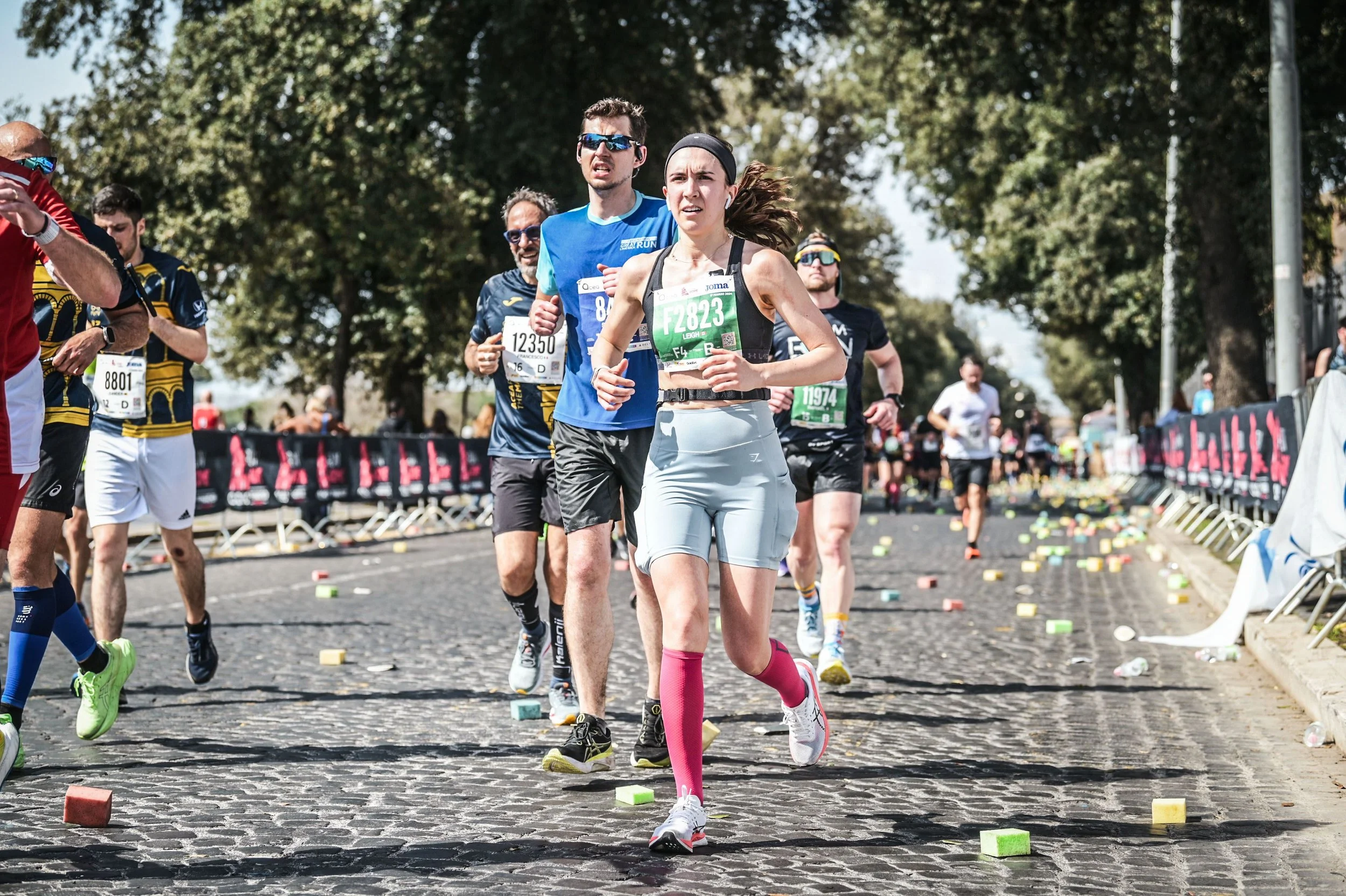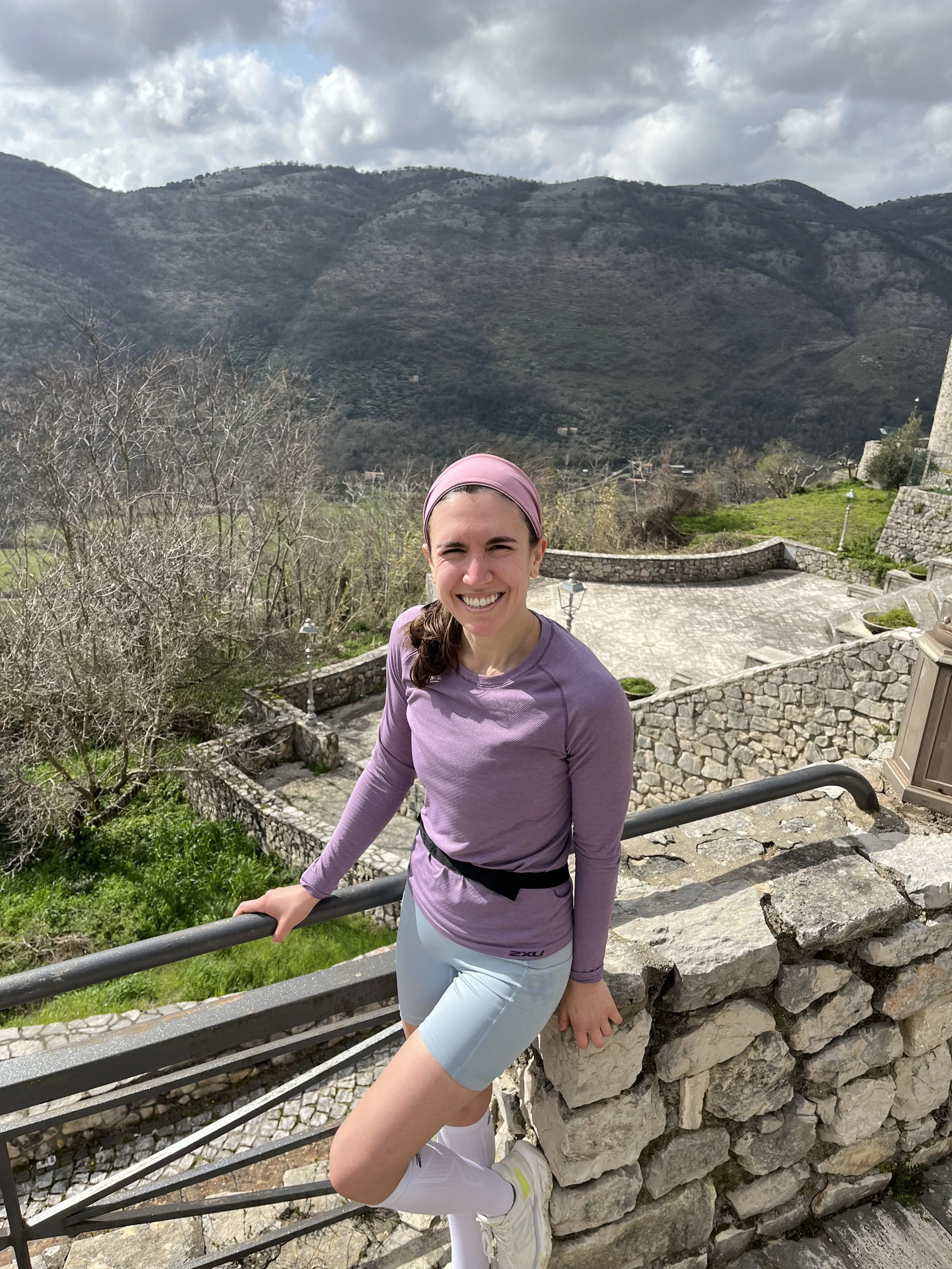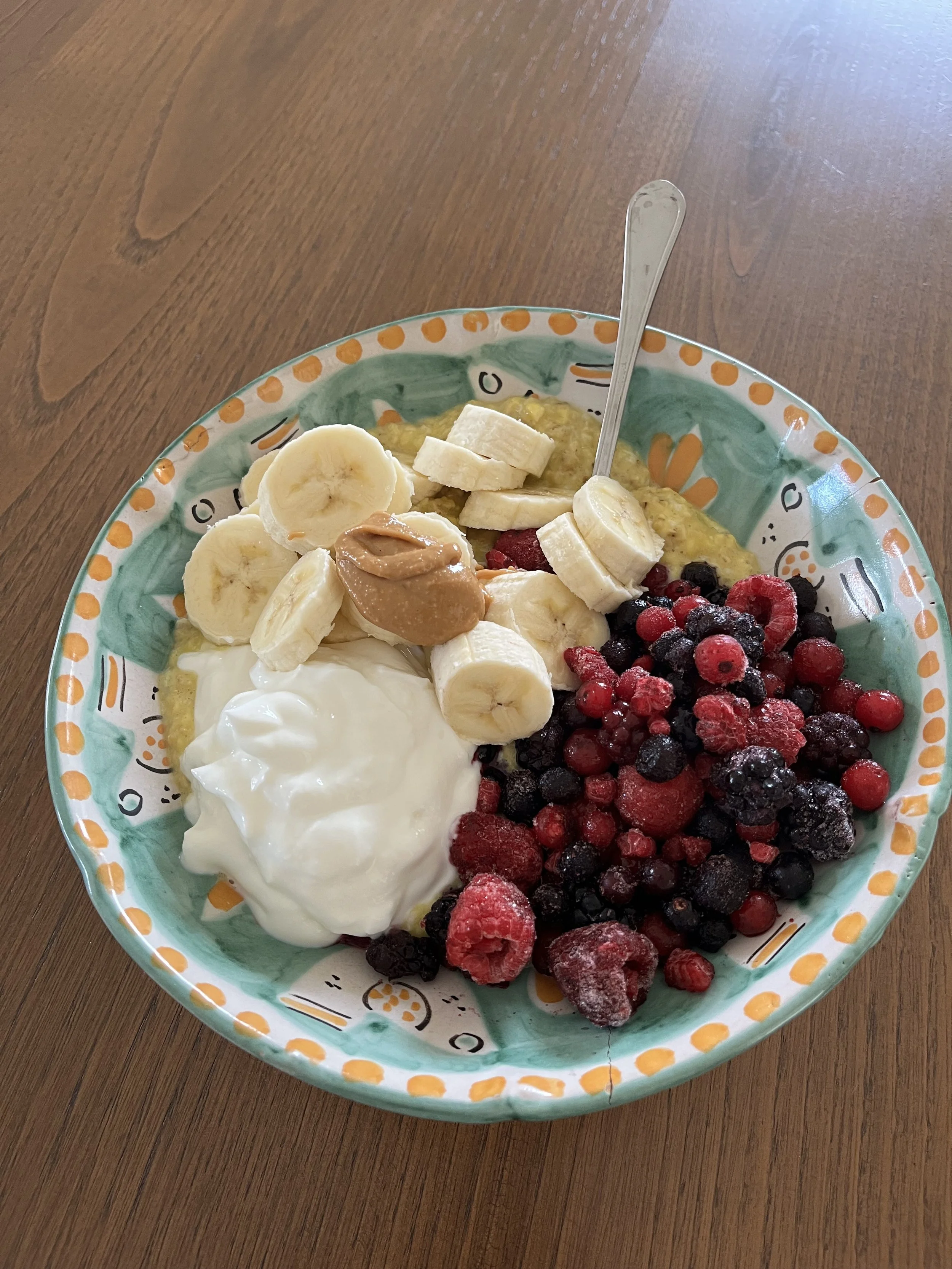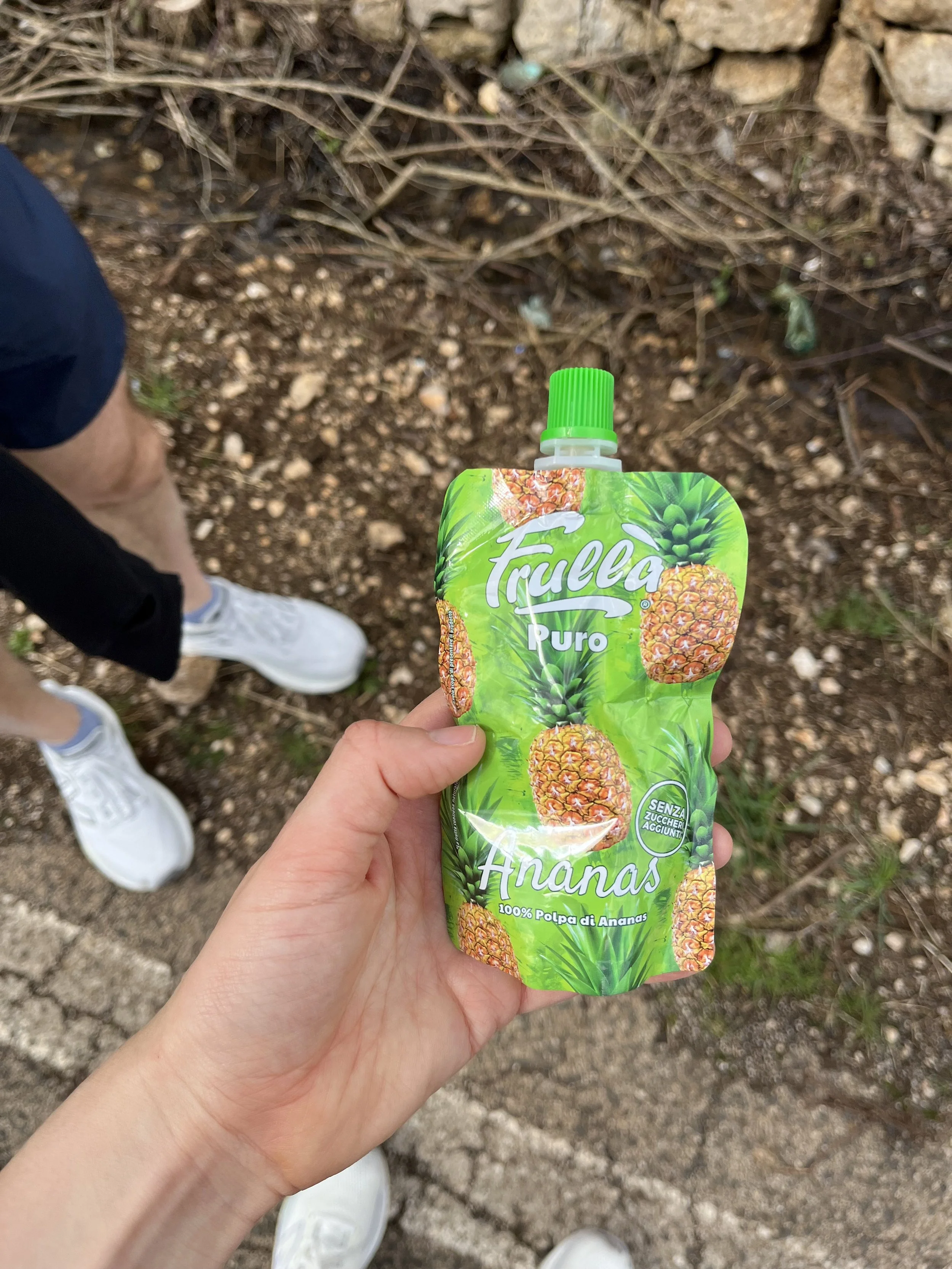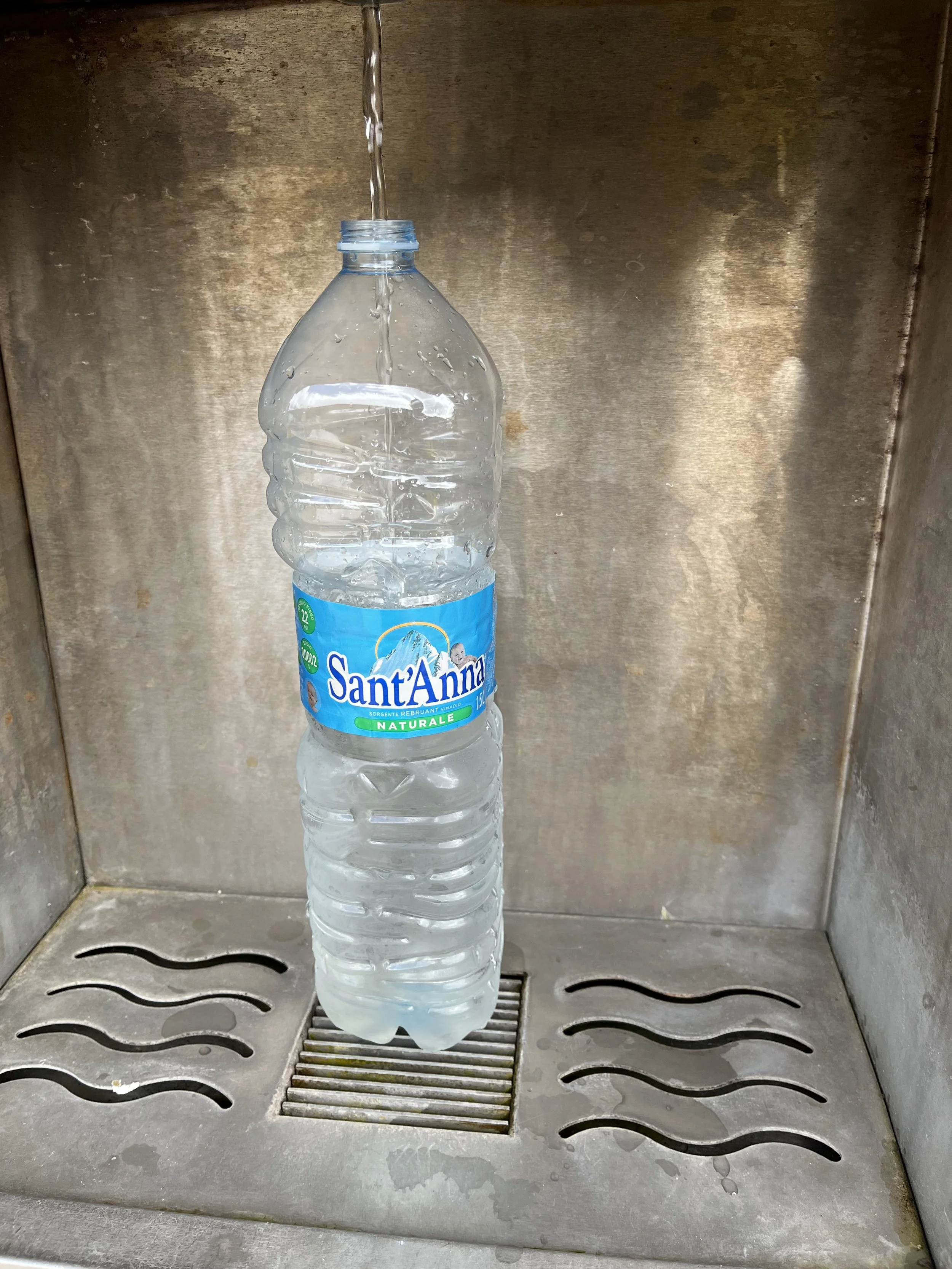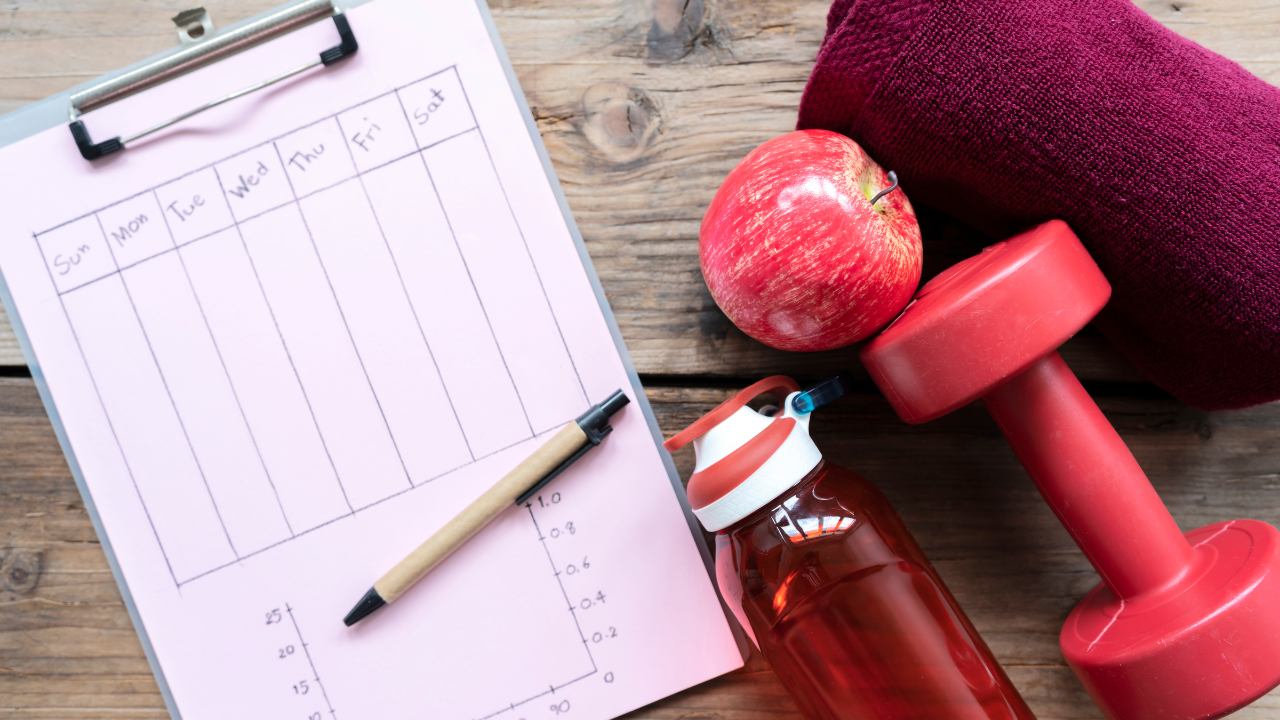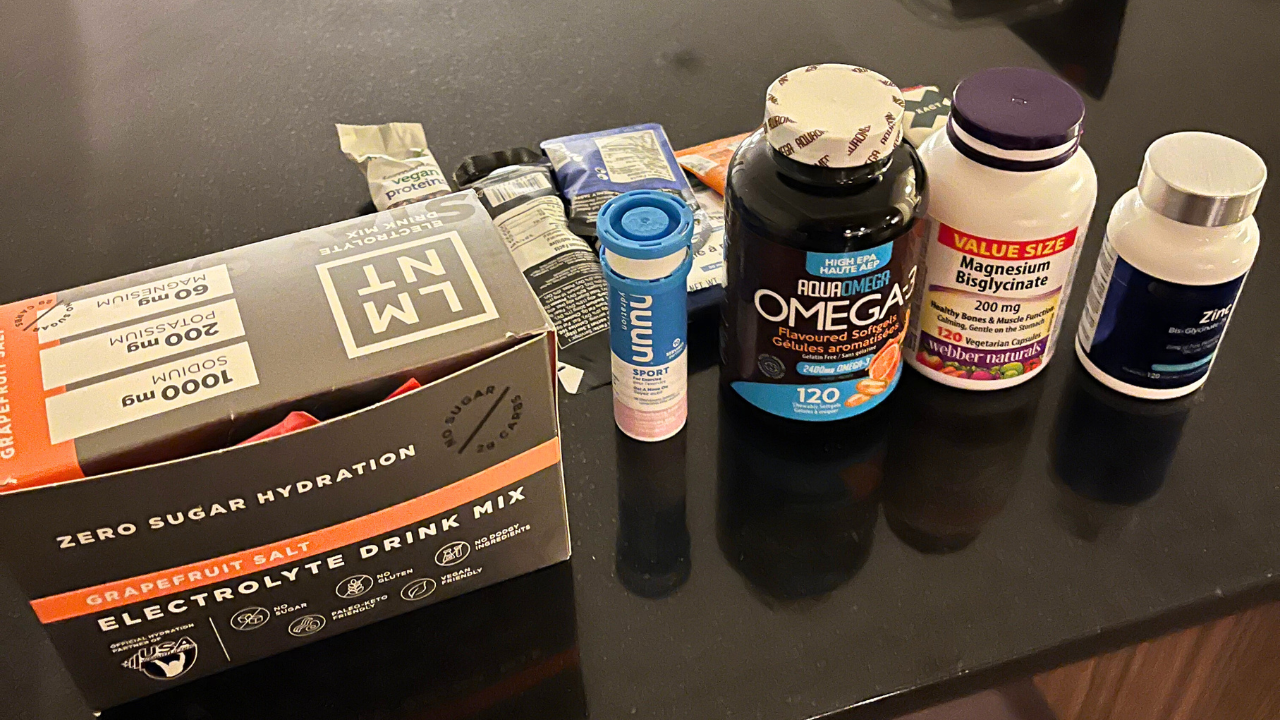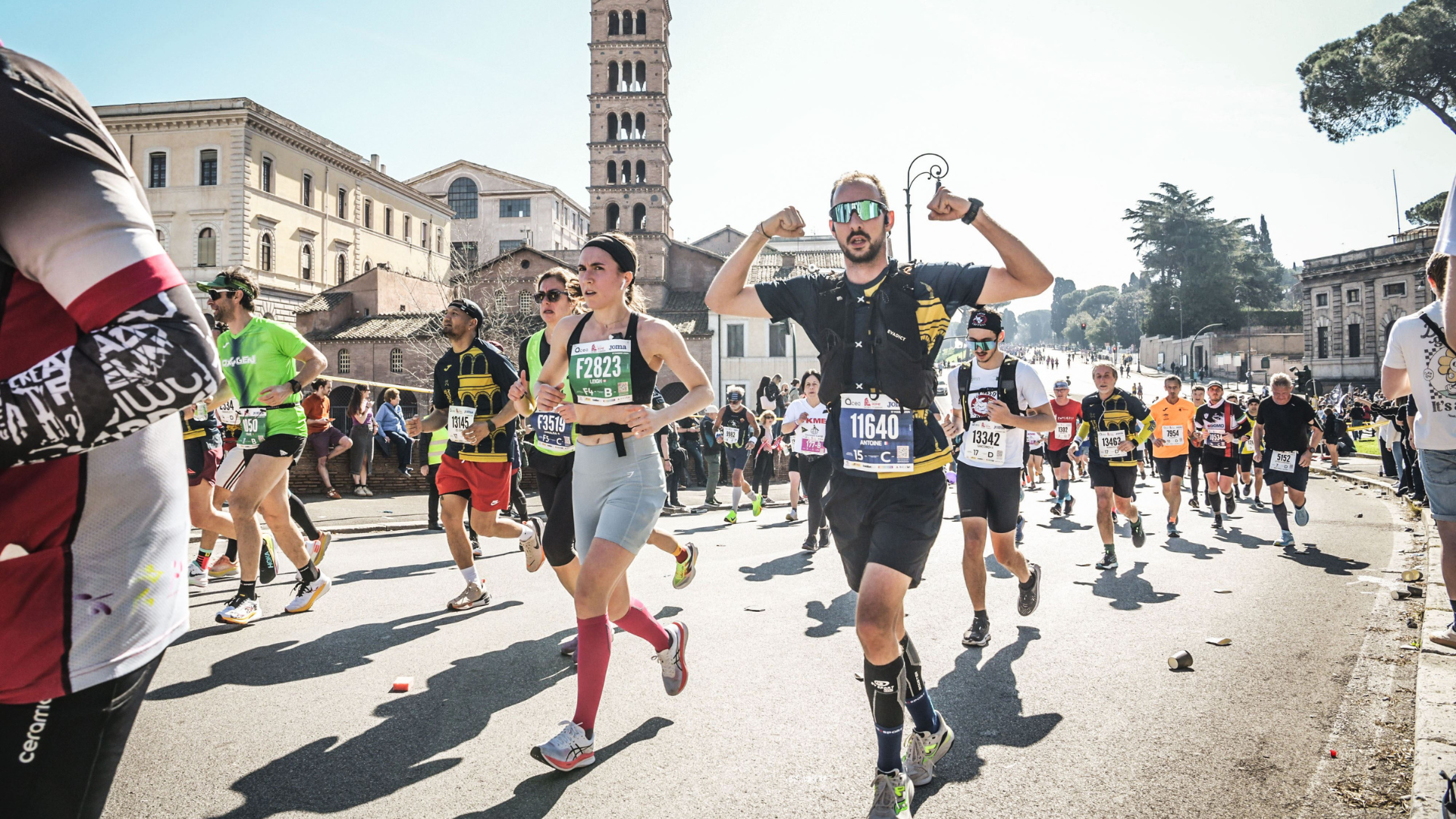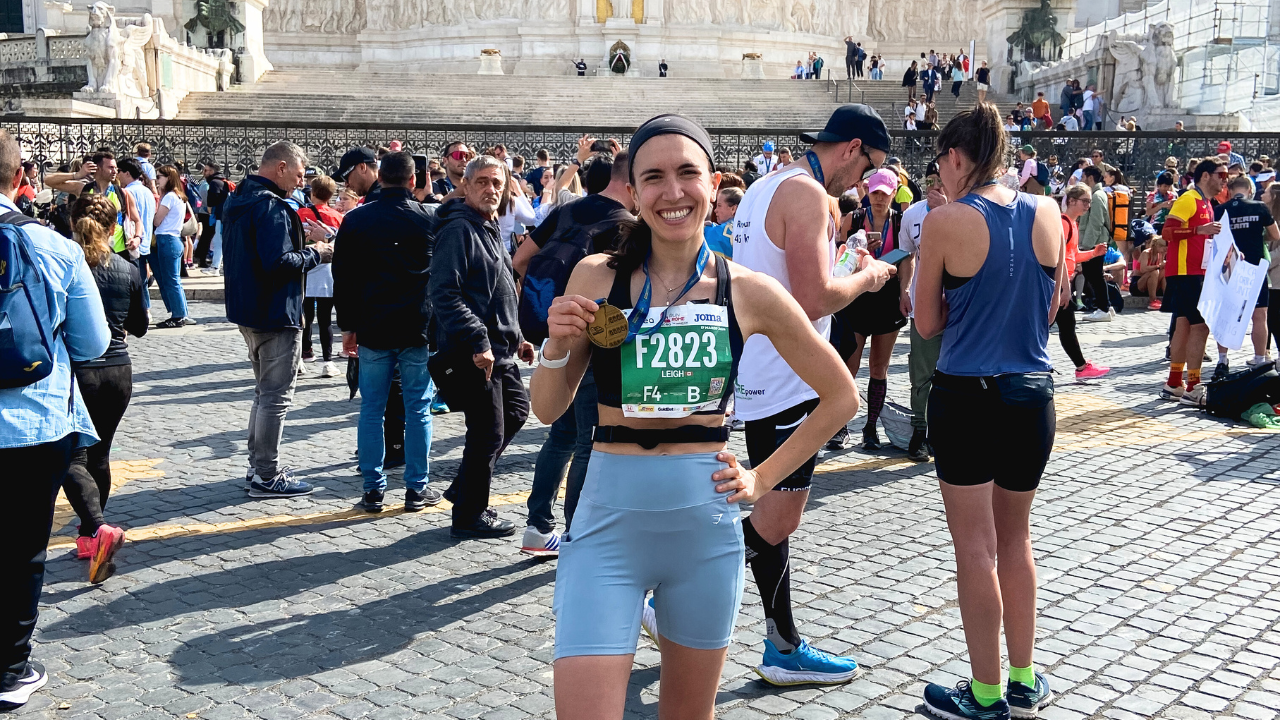Full Recap of Nutrition & Training for the ROME Marathon (by a Gut Health & Sports Dietitian)
On March 17th 2024, I had the opportunity to participate in the ACEA Run Rome the Marathon! Having been a long-time runner, this was a dream come true. While I’ve run a fair share of 5K, 10K, and half marathon races, this was my first time running a full marathon.
There’s no doubt about it... Preparing for a marathon involves meticulous planning, dedication, and attention to detail. As a gut health and sports dietitian, I approached my training with a focus on optimizing fueling strategies while supporting a happy gut. From the early stages of training to the final moments of crossing the finish line, every aspect of nutrition, recovery, and mindset played a crucial role in achieving my goals!
In this post, I’m going to give you a snapshot of my training and preparation for the marathon. I follow a gluten-free, personalized low FODMAP diet, so this will be of interest to you runners with IBS and digestive issues who follow specialized diets. Let’s delve into how I support optimal fueling for endurance sports performance, as well as maintaining a happy gut and keeping digestive flare-ups at bay!
Training Period
My marathon training block started December 1st, 2024 and most of it was in Toronto during the cold, frigid winter months! I actually was happy about this though - it helped motivate me to run outside during the winter (yep, there were some -15 runs!) as well as join a local run club for some group support.
This said, I was fortunate enough to train for the final 3 weeks leading up to the marathon in Italy. We were staying in our family home in Taverna, which is in the rural area of Campodimele, an idyllic Italian town that sits at 642m / 2122.7ft elevation. The air was so fresh, and we had great weather.We didn’t have a car, so we had the chance to reach some local tourist spots, the main town and market by running the hilly roads! Side note: this is one of the reasons I love to run.. It helps me cover more ground and see more sights than I could by walking, and it’s more cerebral than driving in a car (of course).
A stop at the top of the town after a 3km climb up.
I’m going to cover the strategies I had in place during my training period, both at home in Toronto, Canada, as well as my time in Italy.
TRAINING
Running: During my training block I was running 3 days per week, one of which was a long run. For previous races I would include speedwork and tempo training in my runs, however due to settling an injury (more on that below), I had to keep my mileage in the Zone 2 area.
Strength training: Up until the taper period, I was also doing around 4 hours of strength training per week, a mix of calisthenics (body weight training like pull ups, push ups, etc) and free weight training.
Cross-Training: To supplement not running as much as I wanted due to managing an injury, I included 1-1.5 hours of low impact cross-training including elliptical, aqua jogging and stairmaster each week. I also walk at least twice daily and longer hikes/walks on weekends.
NUTRITION
Daily Fueling: I eat around 2300 - 2800 calories per day, aiming for a minimum of 100 grams of protein. On long run days, I make sure to eat adequate carbs as well - aiming for 275-320 grams of net carbs (ie. carbs subtracting fiber intake).
I don’t track my food, only occasionally will I do so on long run days and during a carbohydrate loading protocol (as you will see below). Otherwise, I eat intuitively based on knowledge of what my typical protein, carb, and fat targets are (perks of doing this for a living!), and adding more calories on higher training days based on feel.
I aim to eat at least 10 servings of fruits and vegetables daily, and usually get around 40-60 grams of fiber per day, coming from whole foods like berries, nuts, seeds, dark chocolate, vegetables and whole grains. A healthy gut microbiome is linked with better immunity, as well as running performance, so eating a whole, plant based diet is crucial to me.
A typical dinner meal with complex carbs, lots of veggies (mix of raw & cooked) and a lean protein.
Post-Workouts: I make sure to eat carbs and protein after all workouts/runs. Typical meals look like smoothies with bananas, oats, protein powder, and berries, or oats with 2 eggs cooked into it, topped with lactose-free Greek yogurt, banana, and berries.
A post-workout breakfast with protein (lactose-free greek yogurt, farm fresh eggs),, antioxidants (berries) and carbohydrates (banana, oatmeal). Low FODMAP and gluten-free.
Intra-Workout: For low-intensity runs over 90-minutes or workouts over 75-minutes, I always make sure to take in fuel during the session. This includes easily digesting carbs like medjool dates, baby food (made from low FODMAP fruits like banana or pineapple, or sweet potato), and/or energy gels.
Why fuel? During moderate to high-intensity workouts, including endurance and resistance training, our cells primarily rely on carbohydrates, specifically the carbs stored in our muscle and liver cells known as glycogen. During endurance exercises like running & cycling, we use these up, and once they’re gone, we feel fatigued & can no longer carry on (aka we “hit the wall”). It takes about 1.5 – 2 hours to use up glycogen stores. So if you’re training at or longer than this time, you need to top up your fuel stores, no doubts about it!
Here are my tips to help you fuel properly during long runs:
Start taking in carbs after the first 35-45 minutes & then every 30-40 minutes after
Don’t wait until you feel you “need it” - earlier is actually better! Waiting too long can lead to ‘bonking’ , which essentially means we have run out of glycogen and our blood sugars drop low which is very hard to recover from.
Mix up your carb sources to avoid stacking FODMAPs
Make sure your sports gels are low FODMAP if you have IBS and/or a sensitive gut.
If you’re not used to consuming intra-workout carbs, your ability to absorb them is lower, leading to GI problems such as bloating, nausea, and diarrhea. However, once you get used to it, the number of carbohydrate carriers in your body increases, making it possible for you to absorb more carbs at a time. I practiced my fueling strategy during several long runs, so I knew exactly what worked come race day.
Pineapple puree made with pure pineapple and lemon juice to fuel during a 2.5 hour long run.
Hydration: I drink about 2-2.5L of water, plus 1-2 cups of herbal tea daily. I also add salt to my food and take an electrolyte supplement every morning, and an additional one after longer workouts/runs.
For long runs & workouts, I aim to take in about 250-500ml of fluid every 30-minutes. The range depends on the heat and intensity of the workout.
Filling up a water bottle with local mountain spring water to hydrate.
RECOVERY
Sleep: I get between 8.5 - 10 hours per night, most of the time (90%). Sounds like a lot (most North Americans get around 6 hours per night) but this amount helps me recover adequately. I use earplugs and a facemask, alongside keeping lights low at night.
You may also want to read: Why Good Sleep Hygiene is Essential For IBS Freedom and Optimal Gut Function
Mobility: I start my day with at least 15-minutes of mobility, and a couple of times a week much longer. I also follow every run with a 20-minute prehab routine with specific exercises to help manage injuries.
Walking: Walking is so undervalued but oh-so important! I get in steps as often as possible, as it helps keep things loose and mobile. I also walk at least 15-minutes after every run to help flush out lactic acid.
Injury Management: In addition to the aforementioned strategies, I received extra assistance in managing an injury. In November 2023, I began experiencing shin pain on my left side, which was diagnosed as Medial Tibial Stress Syndrome, also known as shin splints. We determined that this issue stemmed from my running form and wearing ill-fitting shoes.
To address these issues, I collaborated with a physiotherapist to improve my running form, thereby reducing stress on my lower limbs. Additionally, I switched to neutral shoes after discovering that stability shoes were negatively impacting my ankle health. I want to give a shout-out to The Running Physio in Toronto for being an invaluable resource during this time.
Furthermore, I sought treatment from a chiropractor who utilized laser therapy to aid in the healing process of my shin. Additionally, I was provided with warm-up exercises to optimize my body mechanics and prevent the recurrence of pain. I am grateful to Dr. Ricky at Heal Space in Toronto for his exceptional support throughout this period.
Although I needed to refrain from speed work, I only took a cumulative two-week break from running during the marathon training block. Otherwise, I managed to continue running, albeit experiencing a 3/10 pain level that gradually diminished while implementing mobility exercises, treatments, and incorporating ample walking.
As a coach myself, I deeply appreciate the assistance of experts in helping to achieve goals more efficiently than one could alone!
SUPPLEMENTS
Daily Supplements: I have a regimented supplement routine year long that includes:
High EPA Omega-3
Vitamin D3
Vitamin K2
Magnesium
Electrolytes
Creatine Monohydrate
I also take a high dose of zinc 2-3 times a week, and a plant-based protein powder as needed.
I also added in these supplements for my marathon training block:
Liposomal Iron: After doing regular bloodwork in November, I learned my iron levels were normal but below the optimal level of 50ug/L and above for active females. I began taking a high-quality liposomal iron supplement to boost up my stores and counter the iron losses that come with endurance training. I’ve talked about Ferosom Forte before - a patented LCE liposomal iron. Generally speaking, liposomal iron may have better bioavailability, higher absorption, increased delivery to cells, and consequently decreased gastrointestinal effects! If you’d like to give Ferosom a try, use code LEIGH20 for 20% off your first order.
Collagen Protein: In addition, I added 10 grams of collagen protein powder daily, to help support joint health and prevent injury with all the training stress I was putting my body under. This was recommended to me by another Dietitian who is an elite runner (Rachel Hannah RD - she’s awesome!).
Supplements and running fuel prepared to be packed for a month away training and living in Italy.
MINDSET
Having had an injury in this training block, I found mindset was the biggest thing I had to utilize to get through. Using visualization techniques for healing, and repeating mantras including “I am strong, I am feeling good, I am fluid” has been essential. When the mind focuses on pain, it becomes a stronger reality. This is true with injury, as well as something I remind my clients with IBS and chronic digestive issues.
One of our training routes in rural Italy.
PRIORITIZING DIGESTIVE HEALTH & A HAPPY GUT
Alongside the above, I prioritize low fat and low FODMAP foods before and after training sessions. I also prioritize daily bowel movements, especially beforehand for morning runs with taking a high dose of magnesium, hydration, and fiber intake (40+ grams a day).
Another way I support this is through circadian rhythm support. Maintaining a consistent morning routine with wake-up time, sun, movement & water trains my bowels to have a consistent schedule! Getting this down makes all the difference when it comes to feeling good on workouts and not letting your bowels get in the way.
During my time training abroad, I was so grateful to experience minimal gastro-intestinal issues, especially navigating different foods being in a different country. As a Dietitian focused on gut health, I have strategies in place myself to keep my gut happy especially during endurance training, which can often trigger a flare-up!
You may also want to read: Athletes with IBS: Eating for Optimal Recovery, Performance & GI Health
Taper Period (14 to 2 days out):
During the taper period, I prioritized consistency in nutrition and recovery, ensuring my body was adequately fueled and rested for the challenge ahead.
Nutrition: In the 2-7 days leading up to my race, I kept my diet fairly consistent. Before a long-distance event, it’s recommended to “taper” your activity levels to get your legs (and mind) feeling fresh for the big day. It’s generally recommended to reduce running mileage by about 50-60% in the week before the race, which is what I did. I also stopped all weight training sessions 1 week before but maintained my walking and mobility routines.
Naturally, we feel we should “eat less” considering the drop in activity levels during the taper, but in actuality, we should aim to eat the same to provide our body with the fuel it needs to get fully rested and recovered. During this week, I prioritized getting high protein intake, lots of color in my diet, and hydration.
Recovery: As above, I kept my sleep and stress management on point. I also added some extra mobility exercises as well as used my handheld massage gun to work out any tough spots.
Typically, I’d see my massage therapist 3-7 days out, but I did not have access to one in rural Italy so the massage gun did the trick! I use the RENPHO Portable Active Massage Gun and highly recommend it.
A taper week dinner meal prioritizing carbs and protein with gluten-free gnocchi and basil pesto, boiled egg and side salad with tuna.
2 Days Out
Implementing a carbohydrate-loading protocol two days before the race helped boost my performance, supported by a strategic approach to hydration and nutrient intake.
There is some controversy around how to do it, but most research supports that carb loading can improve marathon performance when done properly. I have carb-loaded in the past for a half marathon, but not for a full. A week in advance, I planned out my 2 days of a carbohydrate loading menu using Cronometer to stay organized. My goal was to have 6 grams of carbs per kg body weight for the 2 days beforehand, which was approximately 354 grams of net carbs.
Natural peanut butter and sliced banana on gluten-free toast (Schar Deli Style Sourdough).
Here is what I ate:
MARCH 15th:
BREAKFAST:
Swiss chard
½ cup mixed berries
1 banana
2 boiled eggs
Snack 1:
5 walnuts
5 almonds
¼ cup raisins
1 medjool date
Lunch:
2 slices Schar Deli Style Sourdough
1 banana
2 tsp natural peanut butter
Snack:
60 grams 85% chocolate
1 date
Dinner:
250g Gluten-free Gnocchi
1 tbsp pesto sauce
2 tbsp black rice
2 tbsp chickpeas
100g tuna
1 boiled egg
1 cup spinach
1/4 cup red pepper
Nutrient breakdown for March 15th on Chronometer (2 days out from Marathon).
MARCH 16th:
BREAKFAST:
1 cup cooked oatmeal
1 banana
1/2 cup mixed berries
1 clementine
1/4 cup chickpeas
5 grape tomatoes
2 boiled eggs
Snack 1:
5 walnuts
5 almonds
2 brazil nuts
¼ cup raisins
1 medjool date
Lunch:
2 slices Schar Deli Style Sourdough
1 banana
2 tsp natural peanut butter
Snack:
40 grams 85% chocolate
2 medjool dates
Dinner:
1 cup cooked brown rice
2 boiled eggs
1 cup salad mix (with lettuce, radicchio)
1 cup pumpkin soup
2 cooked beets
1 cup cooked potatoes
1 tbsp hummus
Nutrient breakdown for March 16th on Chronometer (1 day out from Marathon).
Have you been told NOT to carb load, or think it’s all about gorging yourself on pasta the night before a marathon? This is not how the pros do it! While taking in more carbohydrates, we want to reduce our fat and fiber intake to help reduce digestive distress - this means less vegetables, whole grains, fruits and nuts. We also want to reduce protein, just slightly, around 10% less of your usual intake, to help you feel less hungry and able to take in a higher carb intake.
Further, if you have IBS and/or notoriously experience digestive distress during endurance workouts, then doing a low FODMAP carbohydrate load is advisable! I followed a gentle low FODMAP diet for my own, having slightly yellow to red portions of FODMAPs I know I can personally tolerate better (if you aren’t sure about this - speak to a Registered Dietitian trained in the Monash FODMAP diet!).
Looking to improve your nutrition for better gut health and performance? Learn more & apply to work together.
Tips to prevent bloating & feeling heavy during a carbohydrate loading protocol:
Drink plenty of water to help with absorption of carbohydrates into your muscles and liver cells: aim for 1 liter of water per every 50lb body weight
Take electrolytes and add a little salt to food to help with hydration as well
Lower fiber to around 50% of usual intake for the 2 days before the race (depending on your usual fiber intake.. Most people don’t get enough so working with a Dietitian can help you assess the amount right for you)
Keep fat and protein lower to help with appetite
Choose low FODMAP carb sources like rolled oats, rice, bananas, rice cakes, GoMacro bars, maple syrup, gnocchi, rice pasta/noodles, sourdough or low fodmap gluten free bread, etc.
Marathon Day
On the big day, I executed my fueling plan meticulously, taking in a combination of carbohydrates and hydration to sustain energy levels throughout the race. Despite facing physical challenges along the way, I remained focused on my goal and pushed through to finish strong!
Here’s what I did:
Before the race: I woke up around 6 am and drank 1 cup of water first thing. I made some ginger tea to help stimulate my bowels to get things going, while I did about 40 minutes of my pre-run mobility and warm-up routine. Personally, I train fasted, so I did not test eating breakfast before a long run. However, it is recommended to consume around 2 grams of carbohydrates per kilogram of body weight around 90 minutes before. But as the saying goes, never try anything on race day, so I stuck to not eating!
It was a little stressful getting to the start line, and after checking in our bags, we had about 30 minutes waiting on the start line in a group of 19,000 registrants. But the sun was shining, and there was an overall positive energy from the group!
During the race: Cue the gun start, and off we went. I felt super fluid and strong for most of it (physically and mentally), with the exception of a couple of toe blisters developing after the 10K mark.
For fueling, I took in a total of ~45 grams of carbs per hour which were a mix of maple syrup gels, banana/pineapple purées, a medjool date & low FODMAP fruit chews I tested in training (as you know from above). I also took a 200mg caffeine pill at the 10K mark. For hydration, I had sips of water at the stations which were every 3 km and drank to thirst.
I was anticipating the 32 kilometer mark, which many say is the true “halfway” point but once getting there I still was feeling great and could sustain the pace I had been going. I didn’t hit the “dreaded wall” and was feeling confident I would hit my time goal.
My digestion felt great throughout, only some light nausea towards the end as a result of all the carb intake and effort which is to be expected. I gave an all-out effort at the end and finished strong - it felt amazing!
In the end, I finished with a time of 03:57, which was my A goal. I was surprised but happy with my result considering I had to lay off speed work and keep my mileage conservative to help manage the MTSS and tight calf that developed in November, but the optimal fueling, cross-training, and recovery paid off. Woohoo!
Post race: Crossing the finish line, I was sore and in a daze. Despite my quads and core feeling fried, I tried to resist the urge to sit and kept walking around to help flush out the lactic acid and keep the blood flowing as I knew it would help with recovery.
I drank water immediately and then did my post-run rehab routine (a mix of chiro and physio exercises). My appetite was low, but I had an orange and a protein bar to get some fuel in and start the recovery process.
After the race, we went for lunch, and I had a fruit smoothie bowl with granola. Later on, we decided not to go out, and I had a random dinner of foods left in our Airbnb - cooked rice, potatoes, and beets, a protein bar, some nuts, dark chocolate, and dates. It was not an ideal post-marathon dinner (too light on protein), but we decided to prioritize getting to bed early. We were asleep by 9pm, haha!
Post Marathon Recovery
The day after the marathon I did my typical morning routine which consists of drinking 2-3 cups of water with electrolytes, getting in some movement, and taking a cold shower. I did about 40 minutes of yoga and kept it light and flowy. Feeling good!
We spent the day walking through the streets of Rome, basking in the glow of accomplishment, and I couldn't help but marvel at the journey I had undertaken. We took advantage of the free museum passes we got with our marathon admission, and of course - frequent stops for food and coffee!
The day after the marathon we walked 20km around Rome. P.S. Are you on Strava? Follow along with me here.
For dinner, we went to Mama Eat Roma, a magical gluten-free restaurant in the Trastevere area of Rome. I had a big plate of gluten-free pasta, some veggies, and chicken. Bring on the carbs & calories!
Cooked vegetables and a plate of Cacio E Pepe, a traditional Roman pasta made with black pepper, olive oil and pecorino Romano (sheep’s cheese). Ordered with gluten-free pasta, and also a low FODMAP friendly meal.
For the week post marathon, I prioritized recovery and reflection, allowing my body time to rest and recuperate from the exertion. Studies suggest it can take up to 4 weeks to fully recover from a marathon so taking some time off and listening to your body is key. I did around 30-40 minutes of yoga and mobility daily, along with 10 - 20,000 steps and some hiking (we were still in Italy in the gorgeous springtime so I mean, c’mon!). I took 5 full days off of running before going for a light easy 5km run the following Saturday.
A view from our hike to Monte Faggeto (1256m/4121ft a.s.l.) in Campodimele.
I was surprised at how good I felt post marathon, but it goes to show all the strategies I recommend myself to clients truly do pay off. Sleep, fuel, active recovery and reflection was the name of the game!
Fuelling For Exercise When You Have IBS & A Sensitive Gut
Ready to fuel your runs and sports performance, while keeping IBS and gut symptoms at bay? I’ve got all my tips & strategies laid out for you step by step in My Pre & Post Workout Nutrition For a Happy Gut: Mini Course & Resource Bundle!
Closing Reflection
In the end, crossing the finish line was more than just a personal achievement—it was a testament to the power of perseverance, resilience, and the unwavering belief that with the right preparation and mindset, anything is possible. Humans are naturally nomadic, and endurance running and walking truly is in our blood!
As I continue my journey as a runner and sports dietitian, I carry with me the lessons learned from this experience, knowing that each step forward is a testament to the strength of the human spirit and the boundless potential within us all.
Thank you for joining me on this journey, and here's to many more miles ahead!
Questions or comments about marathon fuelling, training & recovery? Feel free to comment below!
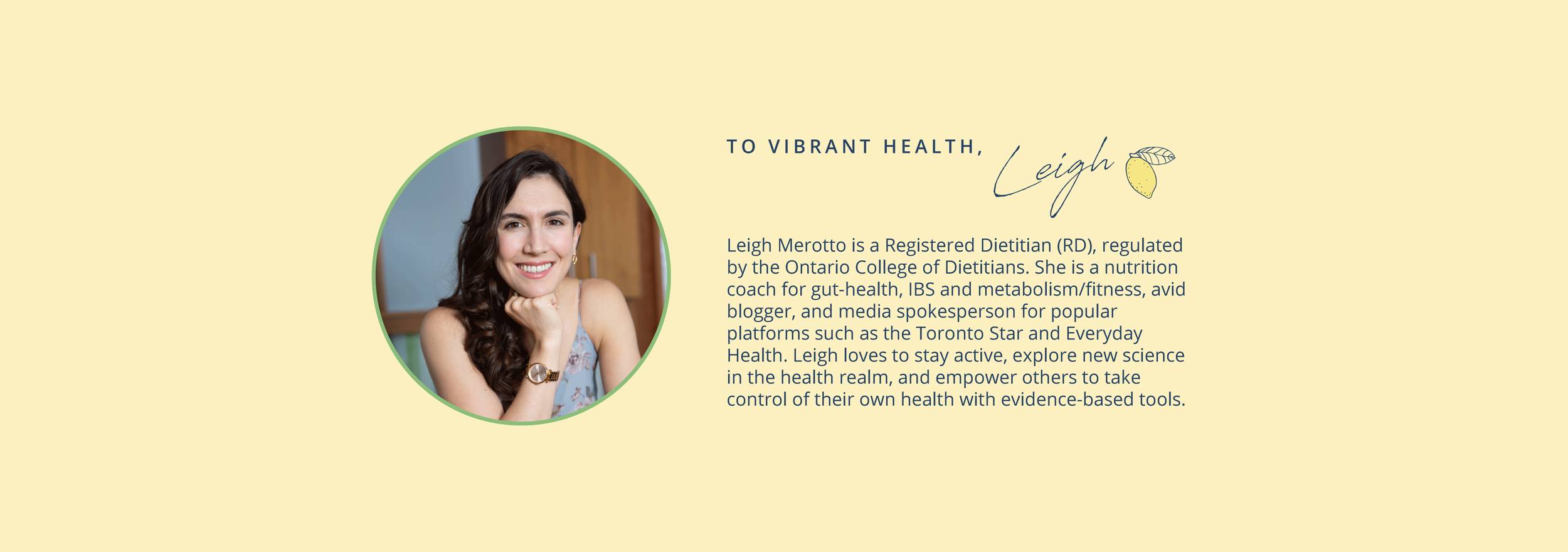
BE SURE TO FOLLOW ME HERE
Earnings Disclaimer: This page contains Amazon affiliate links which provide me with a small commission when you purchase the product from the link provided. This is at no cost to you but simply provides me with some compensation for transparently & honestly providing these book recommendations.

